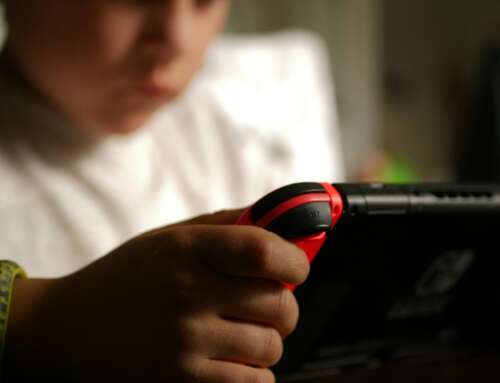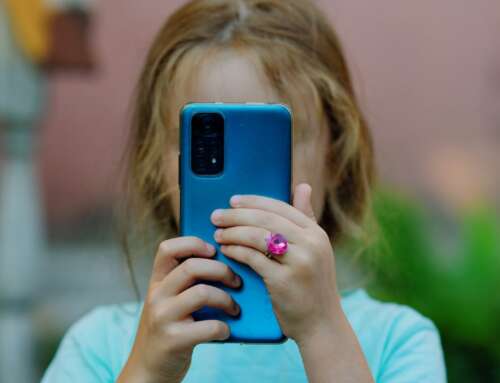It’s fairly settled by now that too much screen time isn’t good for kids, but for specifics we have to turn to science.
A new study from researchers at the Cincinnati Children’s Hospital Medical Center may have filled in some of the blanks, finding that preschool-aged children had lower levels of white matter in their brains the more they deviated from the American Academy of Pediatrics’ recommendations on screen time.
This is concerning because white matter is the type of brain matter that supports language, literacy and cognitive skills, and develops most rapidly in early childhood. Tests of the children’s language use and cognition also showed that the earlier and more frequently they had been exposed to screens, the worse they performed.
The study indicated an association but not causality, meaning that screen exposure may not be directly causing harm but rather taking time from activities that would help with brain development. It also used a small sample of children and measured results only once, so further research will be needed not only to support the results but also to understand the nature of the link.
The study highlights the AAP recommendations, particularly in regards to non-screen playtime and avoiding the use of screens as ’emotional pacifiers’. A list of tips for children and media from the American Academy of Pediatrics is as follows:
- Make your own family media use plan. Media should work for you and within your family values and parenting style. When used thoughtfully and appropriately, media can enhance daily life. But when used inappropriately or without thought, media can displace many important activities such as face-to-face interaction, family-time, outdoor-play, exercise, unplugged downtime and sleep. Make your plan at HealthyChildren.org/MediaUsePlan.
- Treat media as you would any other environment in your child’s life. The same parenting guidelines apply in both real and virtual environments. Set limits; kids need and expect them. Know your children’s friends, both online and off. Know what platforms, software, and apps your children are using, what sites they are visiting on the web, and what they are doing online.
- Set limits and encourage playtime. Media use, like all other activities, should have reasonable limits. Unstructured and offline play stimulates creativity. Make unplugged playtime a daily priority, especially for very young children.
- Screen time shouldn’t always be alone time. Co-view, co-play and co-engage with your children when they are using screens – it encourages social interactions, bonding, and learning. Play a video game with your kids. It’s a good way to demonstrate good sportsmanship and gaming etiquette. Watch a show with them; you will have the opportunity to introduce and share your own life experiences and perspectives, and guidance. Don’t just monitor children online, interact with them – you can understand what they are doing and be a part of it.
- Be a good role model. Teach and model kindness and good manners online. Because children are great mimics, limit your own media use. In fact, you’ll be more available for and connected with your children if you’re interacting, hugging and playing with them rather than simply staring at a screen.
- Know the value of face-to-face communication. Very young children learn best through two-way communication. Engaging in back-and-forth “talk time” is critical for language development. Conversations can be face-to-face or, if necessary, by video chat with a traveling parent or far-away grandparent. Research has shown that it’s that “back-and-forth conversation” that improves language skills—much more so than “passive” listening or one-way interaction with a screen.
- Limit digital media for your youngest family members. Avoid digital media for toddlers younger than 18 to 24 months other than video chatting. For children 18 to 24 months, watch digital media with them because they learn from watching and talking with you. Limit screen use for preschool children, ages 2 to 5, to just 1 hour a day of high-quality programming. Again co-viewing is best when possible and for young children they learn best when they are re-taught in the real world what they just learned through a screen. So, if Ernie just taught the letter D, you can reiterate this later when you are having dinner or spending time with your child.
- Create tech-free zones. Keep family mealtimes, other family and social gatherings, and children’s bedrooms screen free. Turn off televisions that you aren’t watching, because background TV can get in the way of face-to-face time with kids. Recharge devices overnight—outside your child bedroom to help avoid the temptation to use them when they should be sleeping. These changes encourage more family time, healthier eating habits, and better sleep.
- Don’t use technology as an emotional pacifier. Media can be very effective in keeping kids calm and quiet, but it should not be the only way they learn to calm down. Children need to be taught how to identify and handle strong emotions, come up with activities to manage boredom, or calm down through breathing, talking about ways to solve the problem, and finding other strategies for channeling emotions.
- Apps for kids – do your homework. More than 80,000 apps are labeled as educational, but little research has demonstrated their actual quality. Products pitched as “interactive” should require more than “pushing and swiping.” Look to organizations like Common Sense Media (www.commonsensemedia.org) for reviews about age-appropriate apps, games and programs to guide you in making the best choices for your children.
- It’s OK for your teen to be online. Online relationships are part of typical adolescent development. Social media can support teens as they explore and discover more about themselves and their place in the grown-up world. Just be sure your teen is behaving appropriately in both the real and online worlds. Many teens need to be reminded that a platform’s privacy settings do not make things actually “private” and that images, thoughts, and behaviors teens share online will instantly become a part of their digital footprint indefinitely. Keep lines of communication open and let them know you’re there if they have questions or concerns.
- Warn children about the importance of privacy and the dangers of predators and sexting. Teens need to know that once content is shared with others, they will not be able to delete or remove it completely and includes texting of inappropriate pictures. They may also not know about or choose not to use privacy settings, and they need to be warned that sex offenders often use social networking, chat rooms, e-mail, and online gaming to contact and exploit children.
- Remember: Kids will be kids. Kids will make mistakes using media. Try to handle errors with empathy and turn a mistake into a teachable moment. But some indiscretions, such as sexting, bullying, or posting self-harm images, may be a red flag that hints at trouble ahead. Parents must observe carefully their children’s behaviors and, if needed, enlist supportive professional help, including the family pediatrician.
Read the full article by Eleanor Goldberg Fox: There’s evidence that high levels of screen time in preschoolers may hinder brain development
Image by Marvin Meyer from Unsplash







Leave A Comment